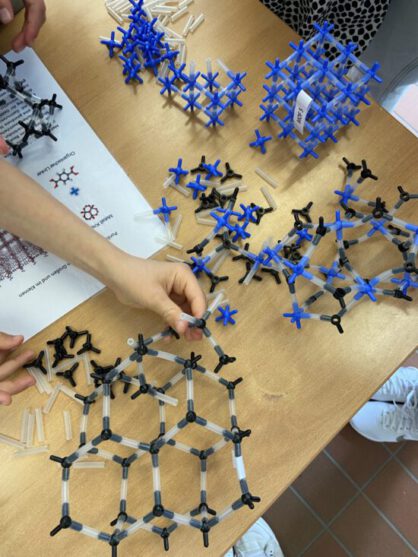Every year, the University of Stuttgart opens its doors for Tag der Wissenschaft/Science Day, allowing visitors to take a closer look at laboratories, exhibits and lectures, and offering hands-on experiments that bring research and teaching to life.
The CRC 1333 had its own booth again this year, and we showed our visitors our research for more sustainability: our researchers are developing improved chemical catalysts to save energy and resources in industrial manufacturing processes.
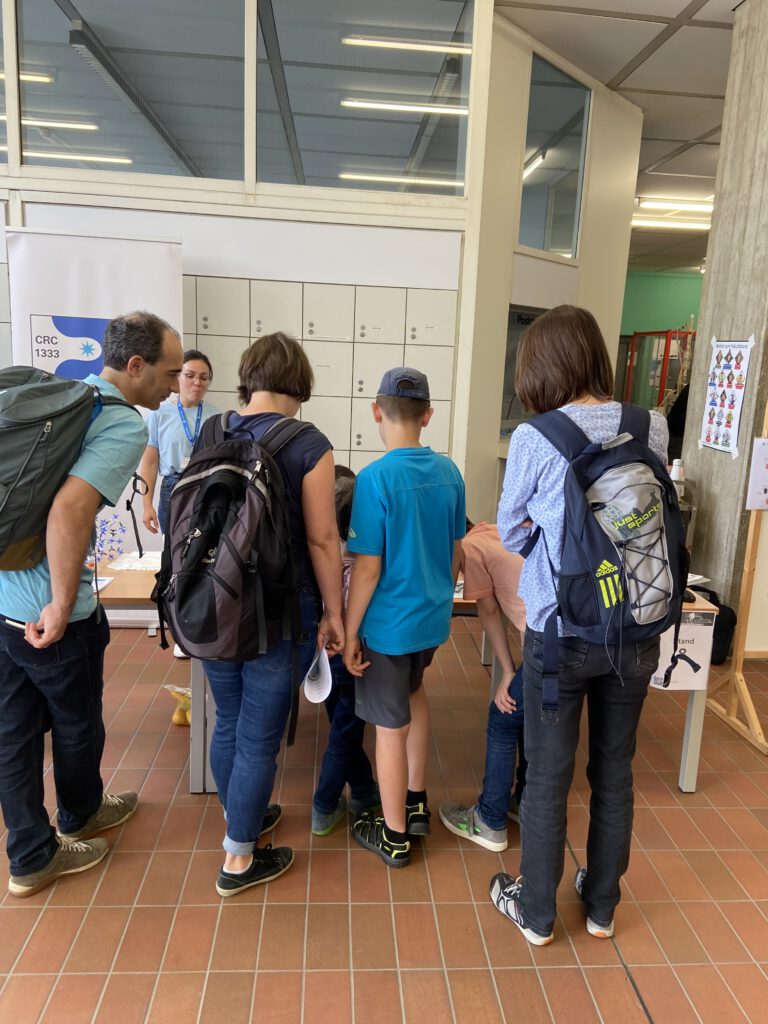
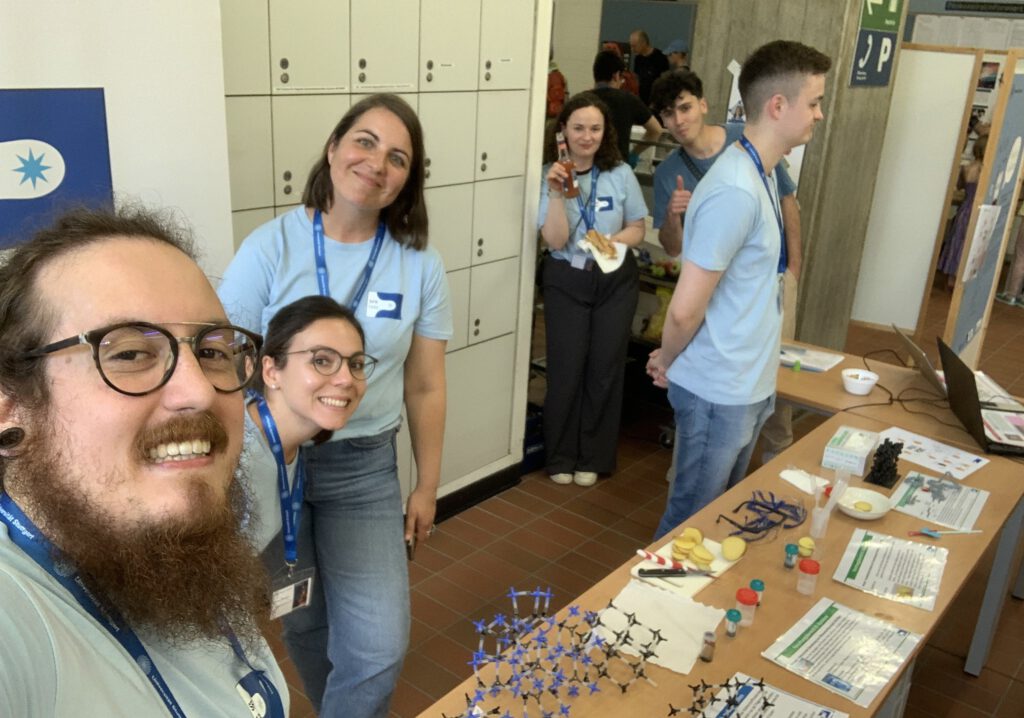
Our researchers explained what a catalyst is by having the children experiment with a raw and a cooked potato. When a few drops of hydrogen peroxide were dripped on the potatoes, the raw potato showed a bubbling reaction caused by catalase, an enzyme and a natural catalyst in the potato, which broke down the hydrogen peroxide into oxygen and water. In the boiled potato, the enzyme was destroyed and no reaction took place.
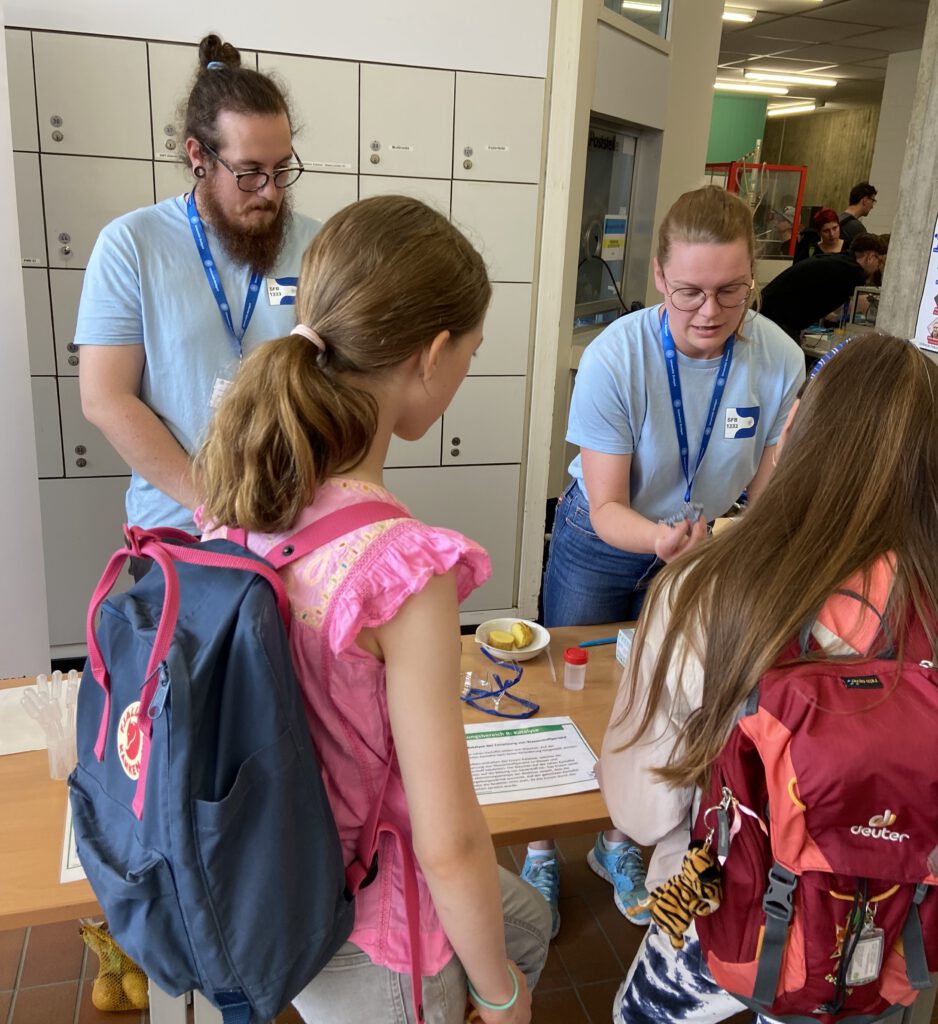
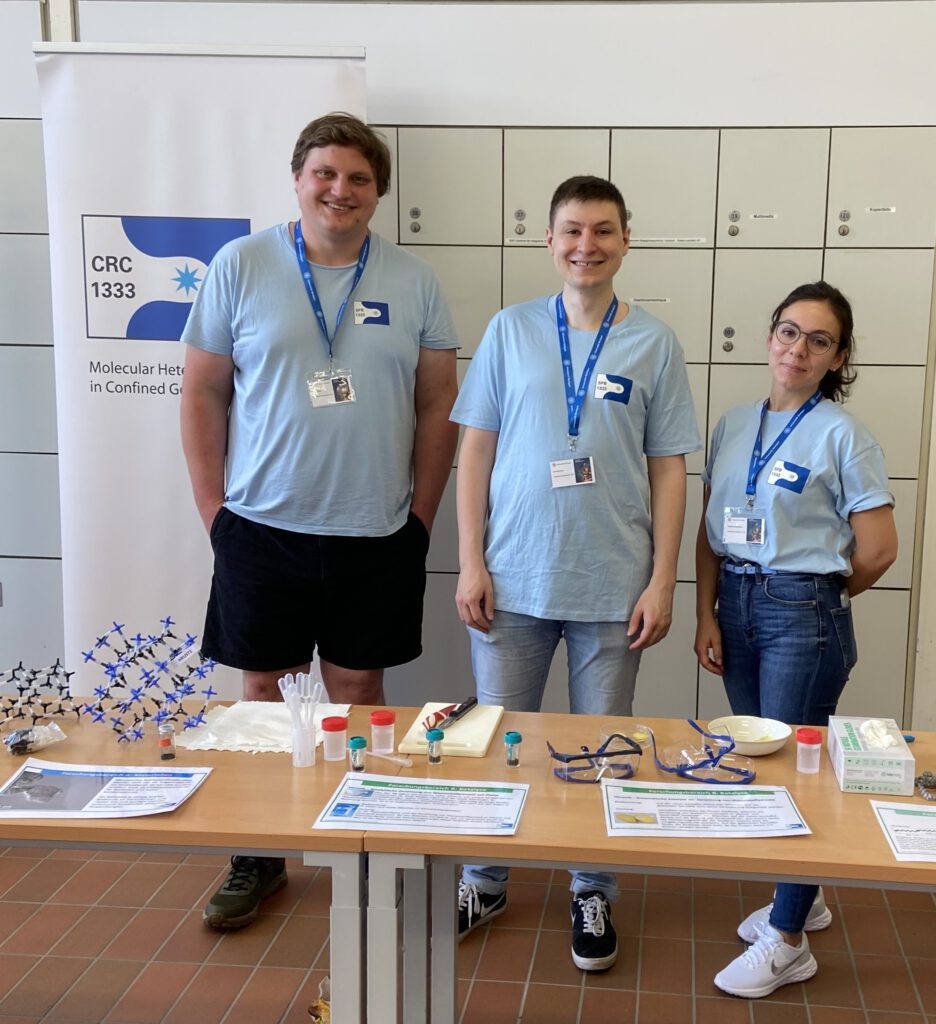
Another every day example used to explain catalysis to our visitors was a contact lens case with a platinum catalyst. The solution used to clean the lenses is hydrogen peroxide, which does a good job of killing any microbes that may have stuck to the lenses, but it’s not very eye-friendly. The platinum catalyst in the lens case wheel is used to completely neutralize the solution by reducing the peroxide to oxygen and water.
Children could also build their own metal-organic framework using a kit of octahedral nodes and linear pieces of tubing. The goal was to form a three-dimensional structure to visualize how the pores are formed and how they are accessible from all sides. A very popular activity and many great structures were built.
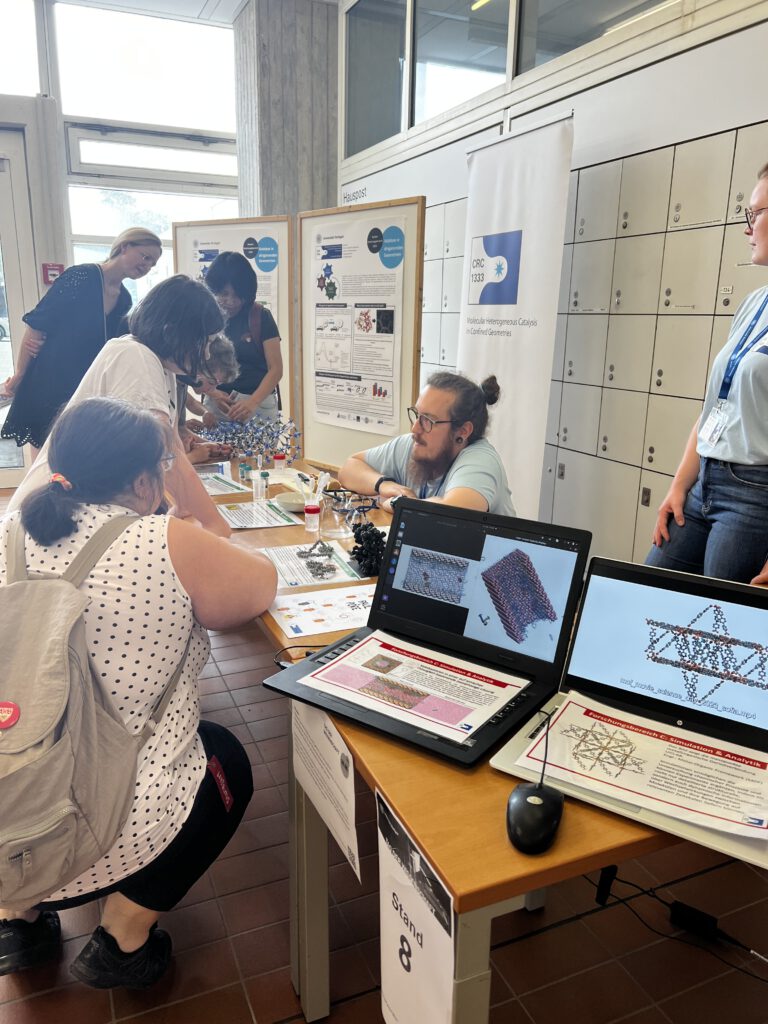
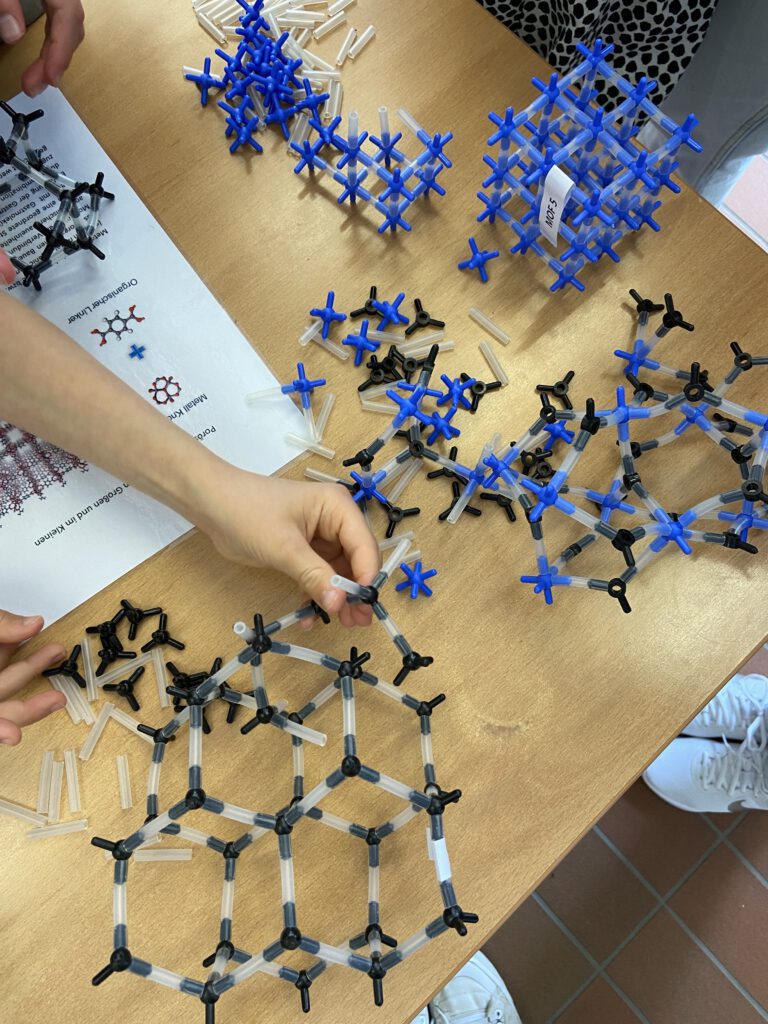
It was a succesful and fun Science Day and we look forward to next year.
